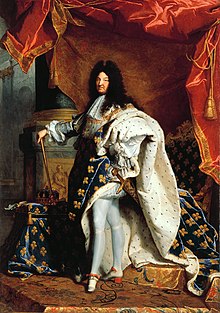 | This is a user sandbox of SCHILLGM9363. You can use it for testing or practicing edits. This is not the sandbox where you should draft your assigned article for a dashboard.wikiedu.org course. To find the right sandbox for your assignment, visit your Dashboard course page and follow the Sandbox Draft link for your assigned article in the My Articles section. |
WHAT I'VE ADDED
Symbolism in the French Revolution was a device to distinguish and celebrate (or vilify) the main features of the French Revolution and ensure public identification and support. In order to effectively illustrate the differences between the new Republic and the old regime, the leaders needed to implement a new set of symbols to be celebrated instead of the old religious and monarchical symbolism. To this end, symbols were borrowed from historic cultures and redefined, while those of the old regime were either destroyed or reattributed acceptable characteristics. New symbols and styles were put in place to separate the new, Republican country from the monarchy of the past. These revised symbols were used to instill in the public a new sense of tradition and reverence for the Enlightenment and the Republic.
The Elephant of the Bastille and the July Column

The fall of the Bastille on July 14th, 1789 marked an important moment for the French people. A prominent symbol of monarchical reign, the Bastille initially served as a political prison. In time, however, the Bastille had transitioned from being a prison, to housing primarily weapons, thought the symbolism remained, and the building had become synonymous with the French monarchy and tyrannical reign.[2][3] The fall of the monument resulted in several nobles fleeing France, and violent attacks on the wealthy. [4] The Elephant of the Bastille was erected to mark the fall of the Bastille, designed by Napoleon as a symbol to his own victories, which he had constructed from the guns of his enemies at Battle of Friedland.[5] The elephant was demolished in 1846 and replaced with the July Column, which now stands in Paris on the elephant's original base. This column was created under the reign of King Louis-Philippe I to celebrate the July revolution of 1830 and the installment of the July Monarchy.
Clothes

Sans-culotte literally translates to "without knee breeches" according to the Encyclopedia Britannica, referring to the long pants worn by the revolutionaries who used their dress to distanced themselves from the French aristocracy, and aristocracy as a whole, who traditionally would have worn culotte, or silk knee-breeches.[6] Such long pants were a symbol of the working man. Another symbol of the French aristocracy was the high heel. Prior to the French Revolution, high heels were a staple of men's fashion, worn by those who could afford them to signify high social standing. Louis XIV popularized and regulated the wearing of the high heel within his court. The king himself, along with many of the nobility at his court wore red high heels, the red color being used to "...demonstrate that the nobles did not dirty their shoes..."[7] according to Philip Mansel, an expert of court history. During the revolution, however, these styles fell out of fashion for men as the monarchy became increasingly unpopular and associations with the monarchy became increasingly dangerous. Such fashion also became symbols of frivolity, which made them unpopular for the average French individual.
- ^ "Elephant of the Bastille", Wikipedia, 2019-08-05, retrieved 2019-11-25
- ^ Reid, Donald (1998). "Review of The Bastille: A History of a Symbol of Despotism and Freedom". French Politics and Society. 16 (2): 81–84. ISSN 0882-1267.
- ^ Clark, Kenneth, 1903-1983. (2005). Civilisation : a personal view. John Murray. ISBN 0719568447. OCLC 62306592.
{{cite book}}: CS1 maint: multiple names: authors list (link) CS1 maint: numeric names: authors list (link) - ^ "III. From District to Section", The French Revolution in Miniature, Princeton University Press, pp. 76–103, 1984-12-31, ISBN 9781400856947, retrieved 2019-11-06
- ^ Caradonna, J. L. (2008-08-27). "Une histoire de l'identite: France, 1715-1815". French History. 22 (4): 494–495. doi:10.1093/fh/crn050. ISSN 0269-1191.
- ^ "Sansculotte | French revolution". Encyclopedia Britannica. Retrieved 2019-11-25.
- ^ Mansel, Philip (2005). Dressed to Rule: Royal and Court Costume from Louis XIV to Elizabeth II. Yale University Press. ISBN 978-0-300-10697-8.